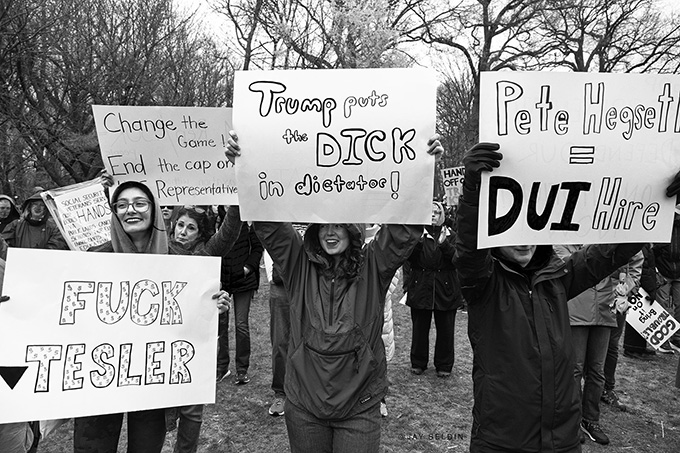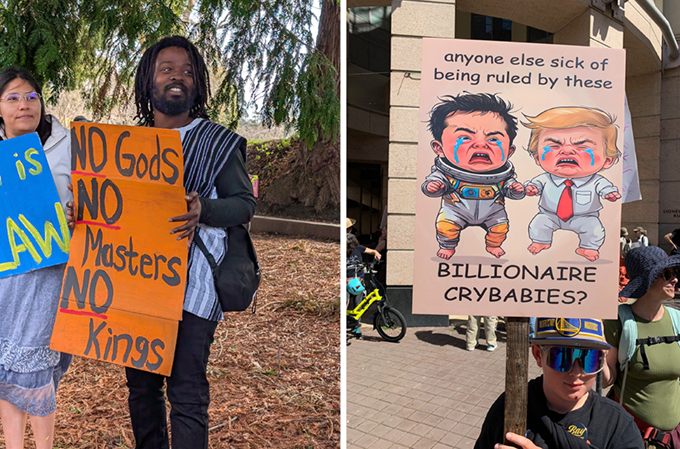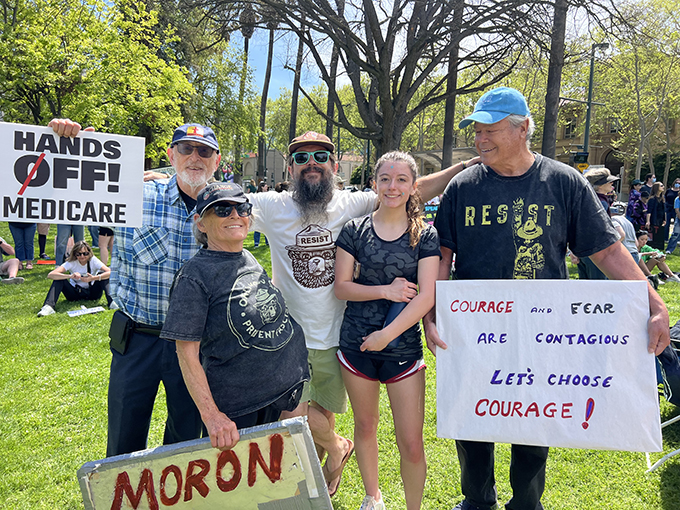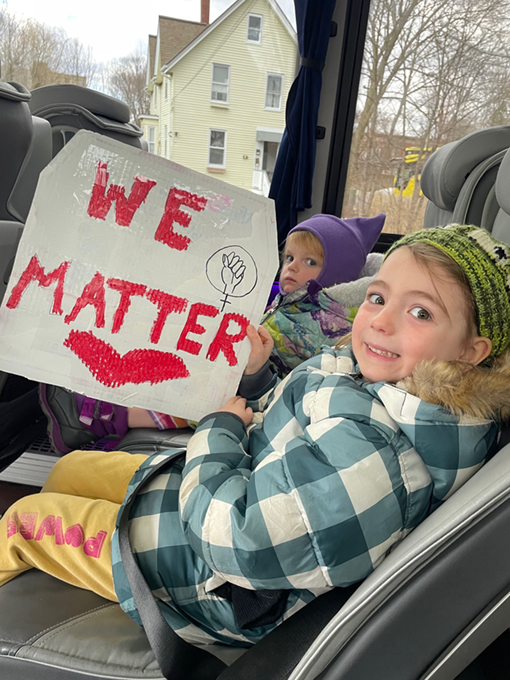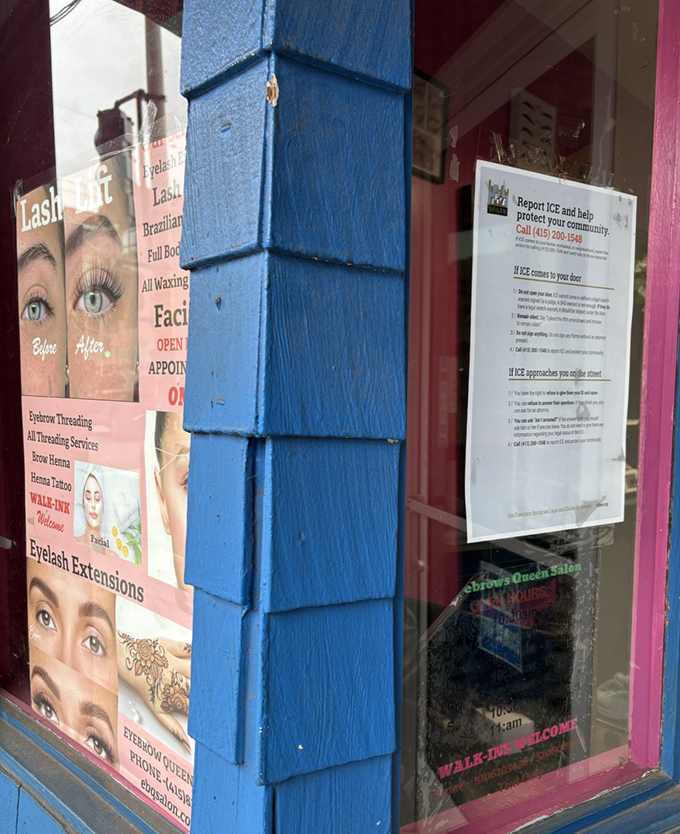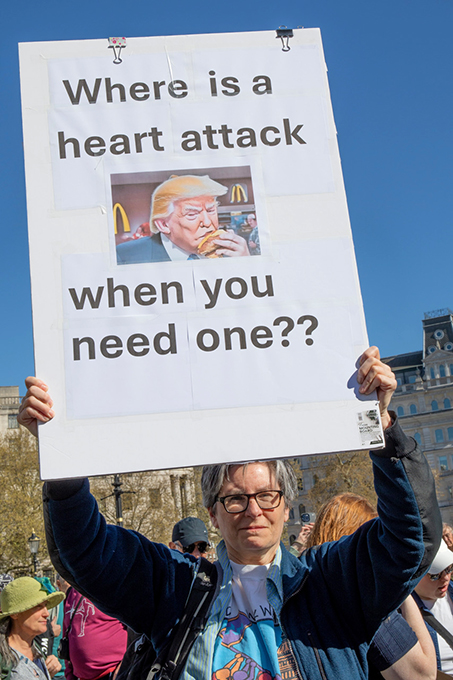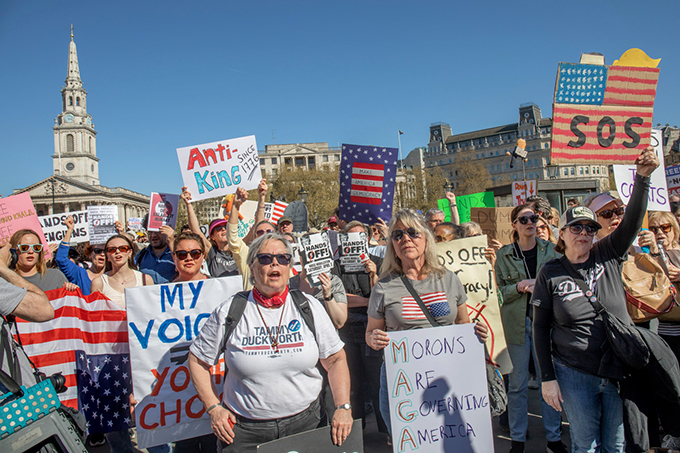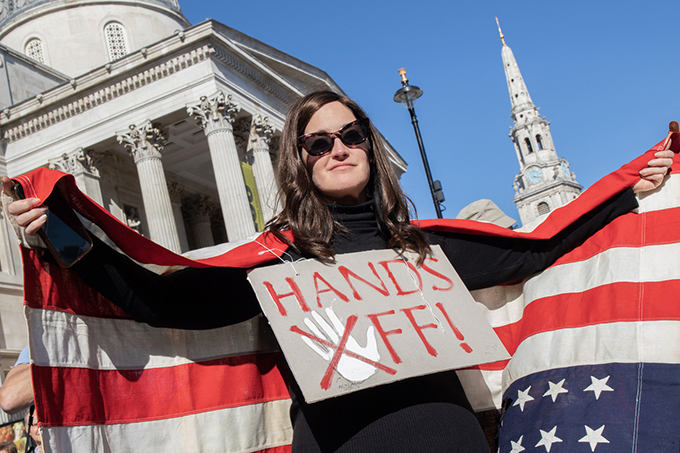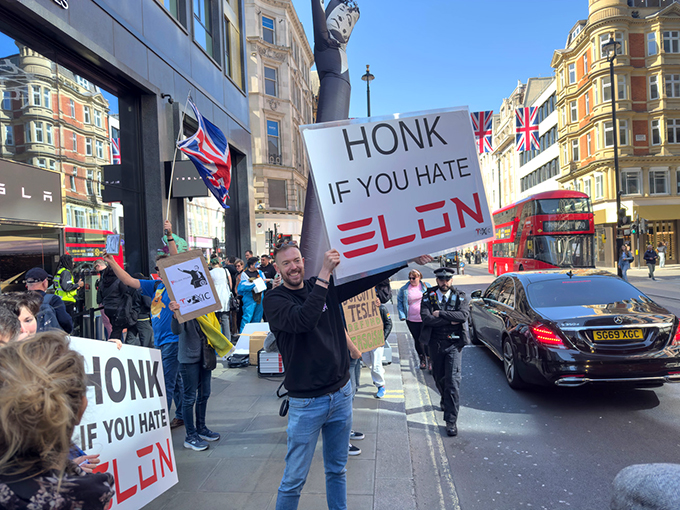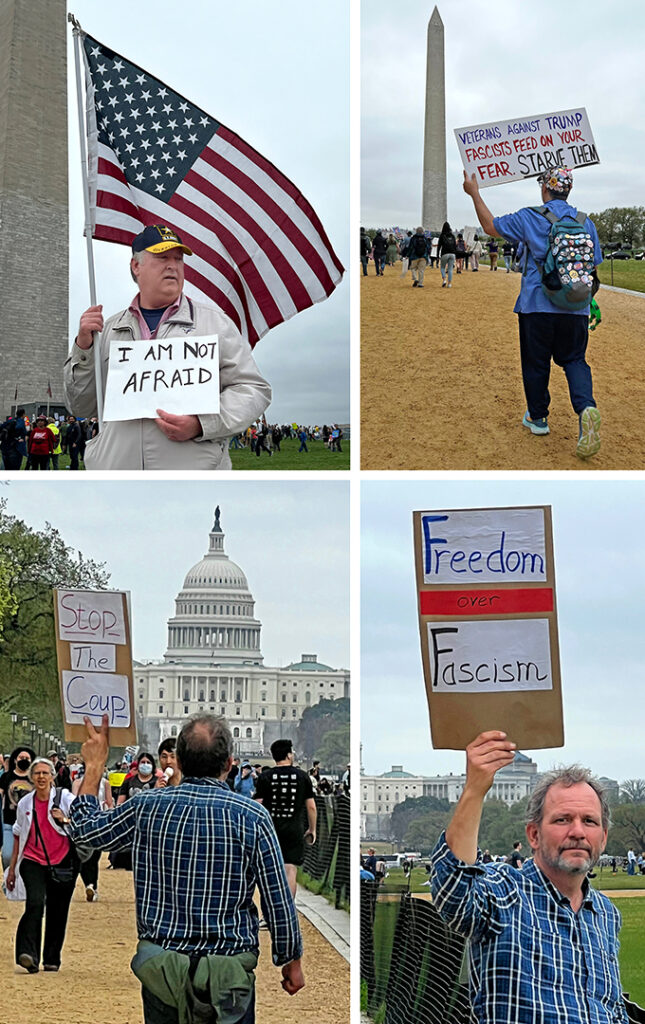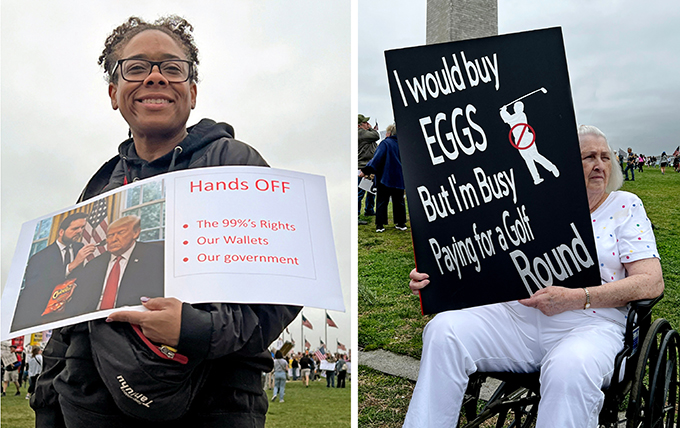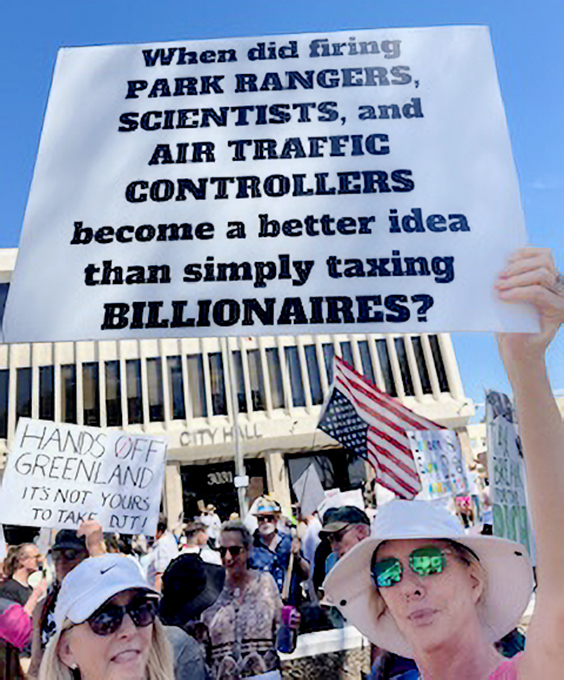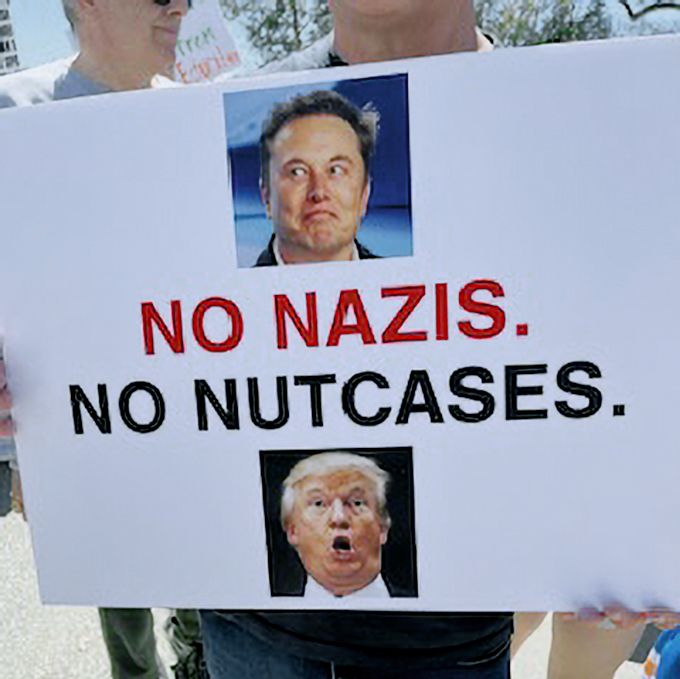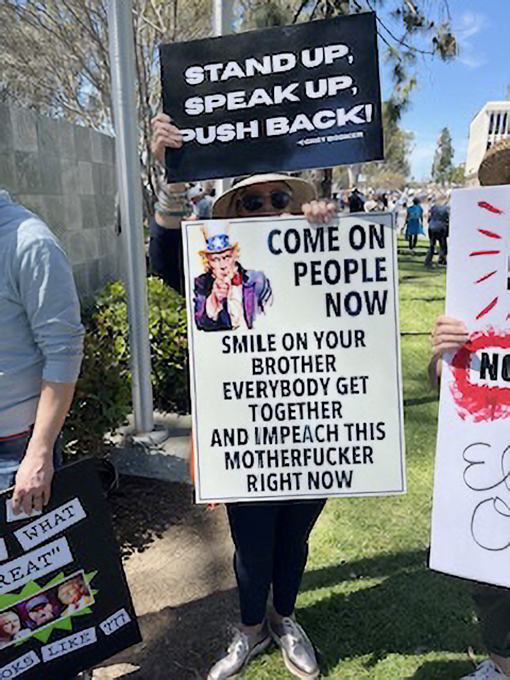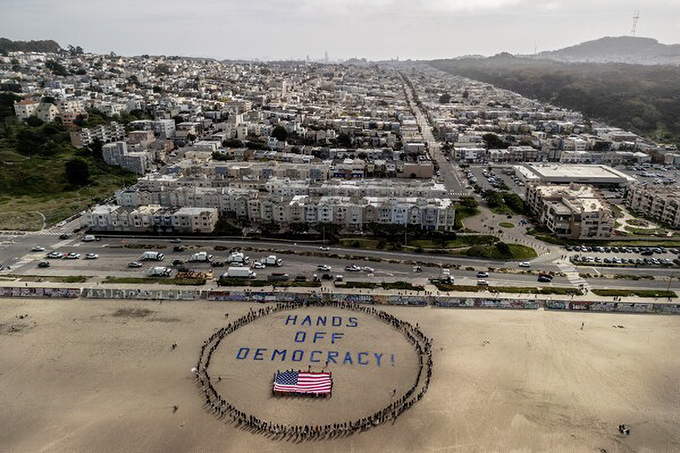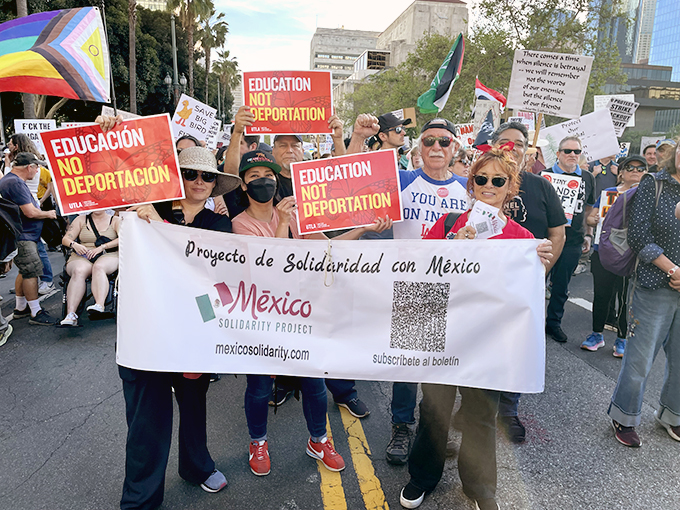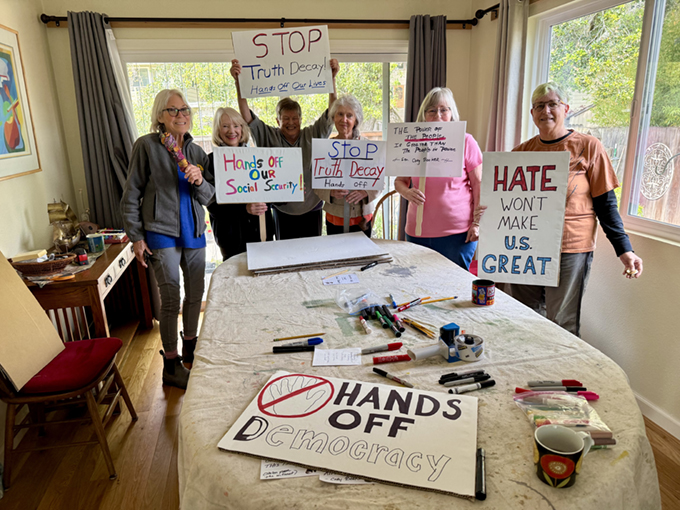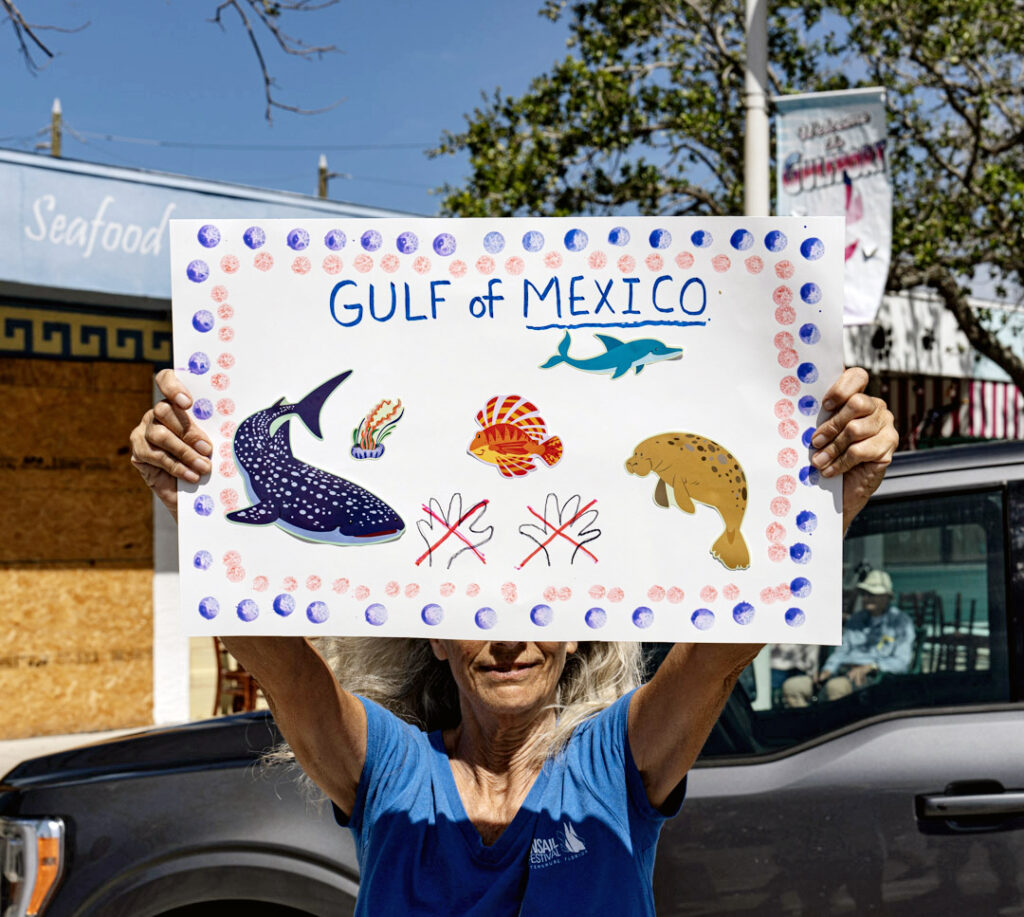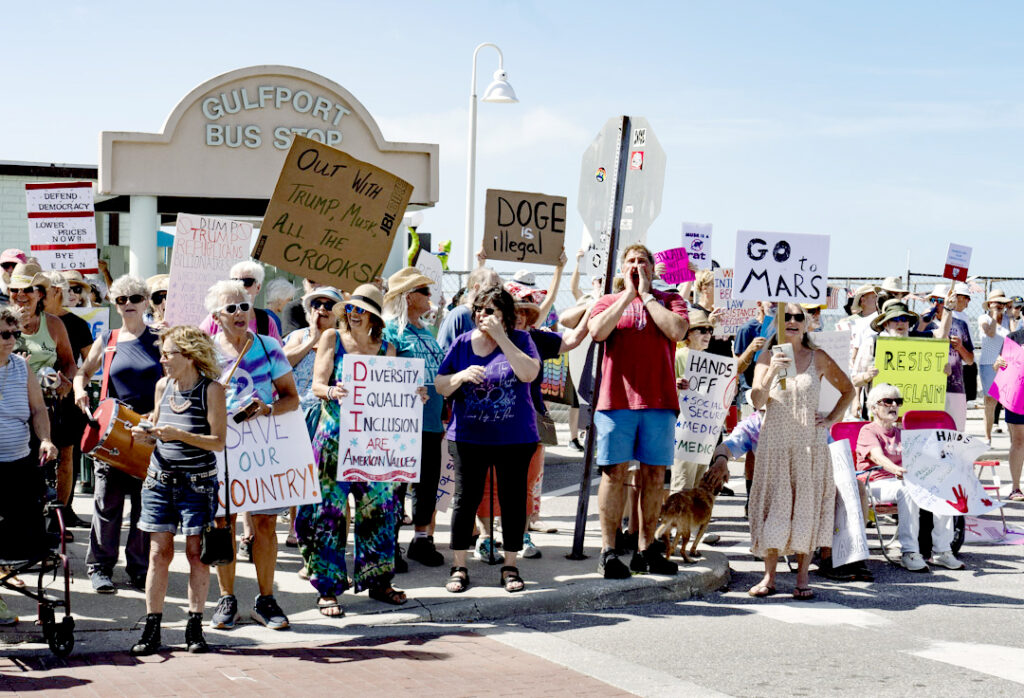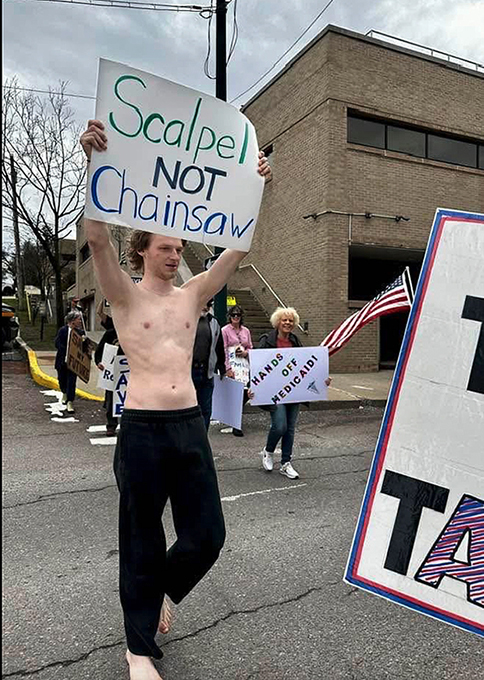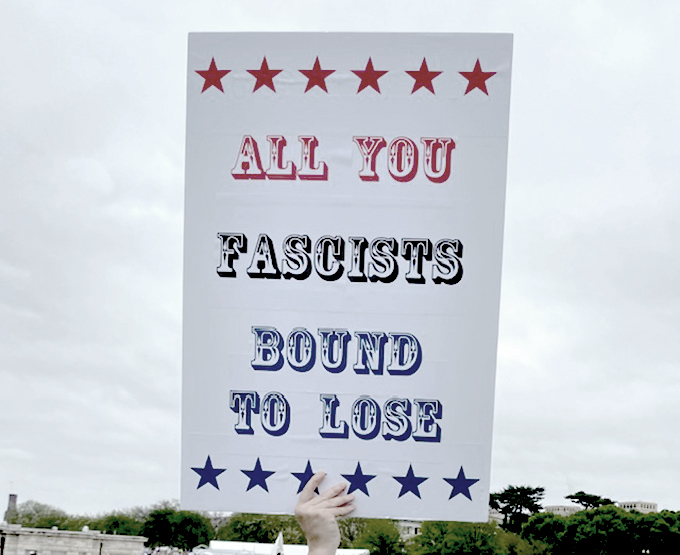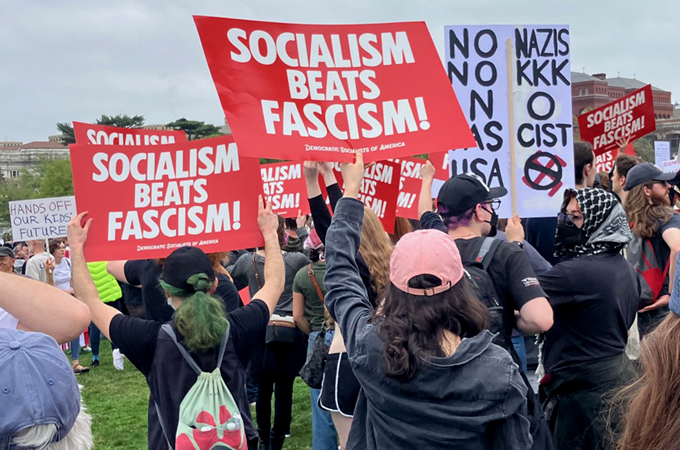May Day 2025: The current installment of an annual remembrance (1)
By Robert J.S. Ross, PhD
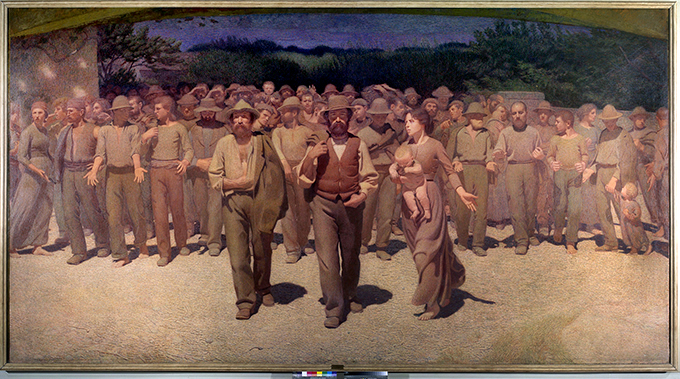
Dear friends, comrades and colleagues
The story of May Day as an international worker’s holiday has its distant origin in Chicago in 1886. And it finds its relevance in the current Administration’s full throated attack on trade unions and standards of working conditions.
Since late in the eighteenth century American workers had sought to protect their lives and families –their humanity — by limiting the hours of the workday. As early as 1844 John Cluers led a labor federation calling for July 4 of that year to be declared a Second Independence Day in support of the ten-hour day.
Later, in the fall of 1885, the predecessor to the American Federation of Labor (AFL) decided upon May 1886 as the start of a series of strikes for the eight-hour day. They called for demonstrations declaring that after May 1 the working day would be de facto eight hours. Hundreds of thousands did demonstrate and strike that day, and tens of thousands won shorter hours.
The most memorable and tragic events of the 1886 struggle occurred in the days directly after what Samuel Gompers had also grandly called the Second Independence Day.
In Chicago, the May 1st rally in Chicago had been gigantic, and the city was tense. The Lumber Shovers union of 10,000 was on strike for the eight-hour day. They held a rally on May 3rd near the McCormick Harvester works, which was then gripped in a bitter lock-out and strike. As the workday ended at Harvester, strikebreakers came through the gates and some of the six thousand rallying workers protested against them. Police shot at the rallying lumber shovers and killed four on May 3rd.
On the next day, May 4, the leaders of the Chicago Eight-hour movement, anarcho-syndicalists of exceptional leadership ability, most of whom were immigrants, called for a protest of the shootings and a demonstration of resolve. It was rainy and there were numerous neighborhood rallies that day. The crowd was small. It dwindled from three thousand when the charismatic Albert Spies spoke, followed by his comrade Albert Parsons. By the time Samuel Fielden began his address the crowd had become only 300.
Then, 180 armed police, who had been waiting in a side street, marched into Haymarket Square, surrounded the small throng, and ordered the crowd to disperse. Fielden defended his right to speak. The police approached the platform and a bomb was thrown at them. One officer died there and six later. Later research showed that five of the six police who later died were shot by friendly fire as a result of police indiscriminately firing into the crowd. [Eighty-four years later, on May 4th, six Kent State University students protesting Nixon’s invasion of Cambodia, were shot and killed by National Guardsmen firing indiscriminately into a crowd of demonstrators.]
With scant evidence, the leaders of the eight-hour movement were tried and convicted of the murder of one of the police. Four were eventually hanged in November 1887; years later a courageous governor of Illinois, John Peter Altgeld pardoned three who were still in jail. One of the eight died in prison (a suicide).
After the convictions of the Haymarket leaders a worldwide movement in their defense spread through the labor and socialist camps. Thus, the American struggle for an eight-hour day was internationalized by the trial of the Haymarket martyrs.
The Haymarket bombing sparked the first Red Scare. Police around the country hounded labor leaders and socialist and anarchist groups. The defense efforts were not successful – although three of the eight eventually had their death sentences commuted and they were later pardoned.
However, by 1888, Gompers and the AFL were ready to launch once again a militant movement for the eight-hour day. The AFL called for a series of demonstrations, including Washington’s Birthday and July 4th 1889, and May 1, 1890.
“… it is a good time, as attacks on our rights and benefits mount, to celebrate and experience solidarity”
In the summer of 1889, the (Second) Socialist International was being re-founded in Paris. A representative from the AFL read a letter from Gompers to the Socialist Congress asking for support for worldwide demonstrations in favor of the eight-hour day. The French representative LaVigne inserted into a prior resolution on the eight hour day support for the American demonstrations on May 1st 1890. And so, around the world on May 1, 1890, workers called for the eight-hour workday – and many struck and achieved it or shorter hours. In Vienna, the entire working class called the day off. In the United States, the Carpenters, leaders in the struggle, won shorter hours for 75,000 workers. By the next year, 1891, it appeared that the May 1st demonstrations for a shorter workday had become an international and regular practice, becoming also a call for universal peace and a celebration of working class power.
Eventually, the conservative wing of the AFL would cause that labor federation to give up ownership of May Day and instead to preserve Labor Day in September as a more conventional American celebration. Around the world, though, both socialists and communists treat May Day as workers’ celebrations.
In the last few years the mainstream labor movement, i.e., the AFL-CIO, has come to acknowledge May 1 as “Workers Memorial Day.” And it is a good time, as attacks on our rights and benefits mount, to celebrate and experience solidarity.
The precious time workers wrenched from the grasp of employers and courts is embodied in our Fair Labor Standards Act of 1938. It requires overtime pay past eight hours in a day or forty hours in a week, as well as giving Congress the authority to set a minimum wage. Its companion was the Wagner Act, the National Labor Relations Act of 1935, committing the nation to support unions and the right to collective bargaining. Each of these is a pillar of decency and support for the dignity of work and labor; and each is now under attack.
There will be broadly based demonstrations on May 1, here in the USA defying Trump and his band of bumbling fascists, and elsewhere wherever working people are able.
I’ll be on Boston Common; perhaps we will greet each other there..
Solidarity
Bob Ross
1)Emended annually, the basic historic narrative is culled from May Day: A Short History of the International Workers’ Holiday, 1886-1986 Paperback – January 1, 1986 – by Philip Sheldon Foner
…
Photo Friday – April 25 2025
By The Editors
Protests at representatives’ offices, demonstrations and “empty chair” events are happening all over.
These are the beginnings of a community not willing to accept what is happening. Acknowledging that community the Stansbury Forum will post images of protest signs on Fridays to celebrate people’s creativity, and community. Today is the first “Photo Friday”. With your help, there will be many more.
Nationwide demonstrations are happening on May 1st – to find one near you try these sites: FifityFiftyOne; ActionNetwork
The Stansbury Forum would love to run images of these events on Photo Friday. Please send 1-5 of your favorites to: thestansforum@gmail.com
Include when and where the photos were taken and how you want to be credited.
Today we are running images from: Martinsburg and Charleston W.V; Santa Cruz, CA; San Jose, CA; Passaic, NJ; Montclair, NJ; Boston, Mass; Oakland, CA.; Berkeley, CA; San Francisco, CA.; Tucson, AZ.
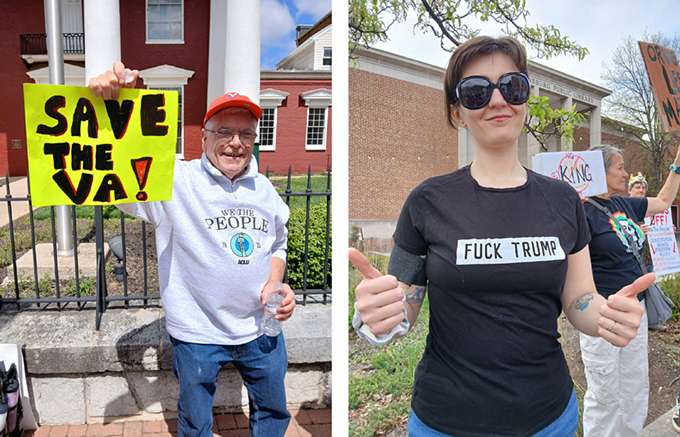
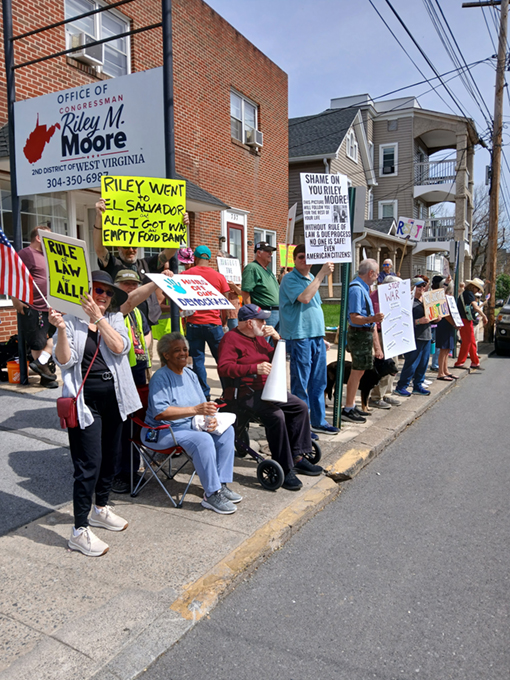
…
Give Light, and the People Will Fight
By Jeff Crosby
While the above illustrations are not specific to the following piece, they are recent examples of points raised below.
Rallying to defend our immigrant neighbors
In February 2025 in Lynn, Massachusetts, ICE grabbed an 18-year-old high school junior from Nicaragua and put her in a cell in Maine, hours away from her family. She had been involved in a minor argument with her 12-year-old brother over a cell phone and pushed him. A neighbor reported a “domestic dispute,” and the police came to the teen’s house and arrested her for assault. The DA dismissed the charges and referred her to counseling. But ICE grabbed her anyway, since she had initially crossed the border illegally—even though she had turned herself in with her family, was waiting for an asylum hearing, and had a legal work permit. It took a cohort of elected officials and pro bono attorneys to get her home after four days in jail.
The abuse got state and even national attention.
Members of the New Lynn Coalition reached out to New Lynn officers with a question: What can we do? And a request: do something! The coalition, a collection of quite different organizations of faith, labor, and community groups, has been together for 13 years, building relationships and working-class power in the city. We had also organized a successful response to Vice President Vance’s racist ramblings about Haitians stealing cats and dogs and eating your house pets a month earlier. This laid the groundwork for a quick and strong response when Trump won the election and began to implement his program of deporting millions of immigrant workers (or maybe just violent criminals, as he and his spokesmen sometimes promised).
Blocking ICE
Our immediate goal was to break through the fear and reassure our immigrant neighbors, with papers and without, that Lynn remains a welcoming city and there are broad forces in the community who have their back. Our migrant neighbors had in some cases pulled their children from school, and even stopped going out altogether. We also hoped to oppose the right-wing groups that were celebrating Trump’s moves and push ICE away from Lynn by encouraging everyone to resist it in any way possible. This can be seen as part of the “Block” part of the helpful paper Liberation Road published: “Block, Broaden, Build.”
Before the election, the challenge was to keep Trump and his New Confederacy forces from winning the vote. Now the task is to prevent Trump from consolidating power, which they did not achieve during the election but are hell bent on doing now. Trump won the popular vote by about 1.2%, but is acting like he won by 90%, which is part of his strategy.
The Coalition and new friends organized a protest at the courthouse and City Hall around the demands “Defend our Community! Defend Democracy! ICE Out of Lynn!” After our partners called on us to act, we facilitated two open planning meetings of 25-30 people on short notice. It would have been more efficient to simply call a board meeting of leaders who already had built trust with each other. But although the broader open meeting was more challenging to facilitate, it brought in new groups and individuals who deepened our understanding of the moment and what we had to do.
While we were doing our urgent planning, an undocumented Dominican was arrested and charged with a brutal murder in Lynn—a restaurant owner was tied up and killed in his own home. The right-wing picked up on this as they do, despite the multiple studies demonstrating that undocumented people commit less crime than those of us who were born in this country. Donald Trump Jr. tweeted about the murder, and Border Czar Tom Homan spread the word about the heinous crime and the accused. (By the way, when we finally build a stronger and deeper democratic country, can we finally get rid of this “Czar” thing?) It was all over local Fox News, and local and Boston papers covered the murder as well. Local internet warriors called for vengeance and blamed our Mayor for being too soft on immigrants: “He has blood on his hands!”
Tensions were high. The police called our Executive Director the day before the Tuesday rally and asked us to postpone it for two weeks, at least until after the funeral for the victim. This caused a serious discussion among New Lynn Coalition officers and the wider board and planners. People spoke about being fired on by the militaries in their home countries, and honestly worried about who would take care of their families if something happened to them. There have been Trump rallies and confrontations in the area in the past – we do have blue state fascists, like the eastern Massachusetts-based neo-Nazi group NSC-131. But the police reported no specific threats against us.
We were also concerned that if we went ahead as scheduled, and something bad did happen, the police could reasonably say they had asked us to postpone and we refused. We would take the blame for something that could potentially be tragic.
Nonetheless, we decided to go ahead. It was too late to cancel in any case — the upcoming protest was all over social media so some people would show up regardless, and it would be less safe if we were not there with marshals and larger numbers. A two-week delay would give the fascists more time to mobilize. And fundamentally if we shut down every time Donald Jr. tweeted, we might as well fold up and admit defeat. This is not going to get any easier any time soon.
The rally was successful. The police were out in full force and did a good job of protecting the rally. It felt like the entire city force was deployed, ready for Armageddon. Our main concern was crossing the street between the Courthouse and City Hall, where we might be vulnerable to a car ramming, but the police blocked off the entire two blocks and also the roads approaching the area, so it was safe. There were no incidents. A pro-Trump rally was supposed to take place on the following Monday, apparently in response to ours, and no one showed up. This is still our city.
About 250 to 300 people attended the rally. Speakers at the rally represented faith, labor, youth, and community organizations, and elected officials. A Guatemalan group that we had not worked with previously joined the planning and turnout. Four local Democratic town committees advertised the rally, although they don’t appear to have the muscle to drive turnout. The youth speakers, from El Salvador and Guatemala, were terrific. The elected officials were measured and careful, with several coming despite the warnings, including the mayor. The time of day and the cold and darkness meant a lot of union people and elders couldn’t come, but there was a good representation. Some people did not come out of fear, and some of our nonprofit advocates and adult education sympathizers didn’t show up, probably out of fear for their students, or fear of losing funding. There was a scattering of people from nearby towns. The rally got good press and was considered a success by everyone involved.
Broadening Resistance
As always, we tried to broaden the democratic front as much as possible. To prevent the consolidation of fascist New Confederate rule, we need all hands on deck, including people with whom we have many, and sometimes important, disagreements.
For example, evangelical clergy in the Guatemalan community stood with us at the rally, and both an evangelical and mainstream pastor spoke. These same evangelicals had opposed adding a demand for a ceasefire in Palestine for our annual May Day march last year, and discouraged their parishioners from attending. (“Evangelicals” is a term that covers a lot of ground, and they are not monolithic on this or other issues.) And before May Day the same people, with important influence in their community, had worked with us in the fight to allow undocumented workers to obtain drivers’ licenses. We respect and build relationships with them, even when we disagree.
Elected officials are another example. Prior to the earlier Haiti event, the entire City Council and Mayor signed a strong statement that we wrote, including “We welcome migrants and commit to using every available means to prevent the harassment and deportations of migrants and their families, including Haitians who have faced racist dehumanizing insults from high ranking government officials including President elect Trump and his VP JD Vance as well as openly fascist groups across the country.” The public statement the council adopted after Trump was elected was more cautious and legalistic, and city councilors were emphasizing that immigration was not a local issue. They were explicitly worried about losing federal funds for local projects, etc. In a post-industrial city like Lynn, which only recently started to see some investment after 40 years of neoliberal abandonment, that is not an unreasonable concern. But several councilors marched at the front with us. The mayor attended on his own, and we invited him to speak. While there are different opinions in our coalition on the mayor’s record, our base was glad to see him at the rally and it was comforting to many to hear him speak, and it was the right thing to do.
We specifically reached out to small businesspeople as well. The coalition’s mission is explicitly “to organize all sectors of working-class people in our region into a unified, permanent, political, and economic force.” In one election, one of our partners endorsed a Haitian small businesswoman who opposed raising the minimum wage, and of course the unions would have no part of that and opposed her. But we knew from experience that small businesspeople were likely to be on our side this time. They have deep ties to the immigrant communities who buy their products, with and without papers, including their own families. During immigration raids under the Obama administration, immigrant neighborhoods were shut down, and struggling local businesses suffered. One owner told me that his restaurant is once again suffering– partly because people are afraid to venture out, and also because people are saving money in case they have to pack up and head back to their home countries. So we successfully involved a small businessman to speak at the rally.
These elements of the community may not be with us on the next issue, but it was important to respectfully bring them into joint activity to protect immigrants and defend democracy, including those who have differed with us in the past and will differ with us in the future.
Mass Line, Give Light
Ella Baker, the brilliant veteran mentor of the Student Non-Violent Coordinating Committee in the 1960s, told us, “Give light, and the People will find the way.” Her work has influenced me more than any other organizer/leader. Mao Tse-tung, leader of the Chinese Revolution, used the term “mass line,” or “from the people, to the people.” You start with the understanding that people make history, not brilliant organizers or leaders (you know, like me!). You respectfully listen to what people are saying and thinking, find the truth in it (because it is indeed there) and return it to them in a more thought-out form in a program that leads us forward, against the actual enemies that we face. Yeah, easier said than done!
We had a lot of conversations in a very short period of time about what we wanted to say, and did not always agree. But we did not have to agree on everything–it’s a coalition. For example, I had originally proposed to the planning group three slogans: “Defend Our City! Defend Our Country! ICE Out of Lynn!” The idea of the middle slogan was to tie us to the broader movement across the country—we are part of something bigger than ourselves. A Muslim woman objected that this sounded too much like Homeland Security calling for defense of the “motherland” against Muslims, invading children of immigrants, etc. She was right, and we switched to “Defend Democracy!!” at her suggestion. This was also at least a small empirical counterpoint to the argument that working class people don’t care about abstract things like “democracy.” In my experience they do, when it is represented in concrete form.
On the issue of crime, with the murder hanging over us, some people didn’t want to mention crime at all or the murder at all, concerned that it would become the main story in the press and keep us on the defensive the whole time. We decided there was no way to specifically address the murder effectively in the context of our march, but I did argue in my own speech that Trump lied about getting rid of violent criminals: “What does that have to do with snatching a high school junior from her home?” It seemed important to draw that line, since we had heard even from undocumented migrants that Trump was only going to go after criminals, not just anyone who arrived here without proper papers. Often these folks were fleeing violence themselves and were not any fonder of violent criminals than anyone else in this country. I think that was the right approach, but others were concerned that we not jump on the “law and order” bandwagon and support mass incarceration, etc.
Even the day and time of the rally was contested. Some people opposed a Saturday march since it is not as good a media day. I and others wanted Saturday so more employed people like union members and elders who don’t venture out after dark could attend. I still think that, but it turns out democracy doesn’t mean you always get what you want.
Building Organization
Early in this Trump administration I read endless statements from Washington liberal pundits about the lack of protest: “Where is the resistance?” etc. In some cases they bemoaned working class support for Trump, usually overstating it, since they tend to look down their noses at working-class people anyway.
They were looking in the wrong places.
The response to our call for action against mass deportations under dire circumstances indicates that when given a clear opportunity from trusted leaders with a working class perspective and base, people will respond.
More important in the long run, people are building organizations, not just protesting and marching in random ways, although there is plenty of the latter as well. And that’s a good thing!
On the North Shore of Boston where Lynn sits, there is more organizational growth than I can keep up with. Attendance at the labor council has increased. Our council president calls it the “Trump Bump.” The organization Indivisible held an initial reorganizing meeting of 20 people—the next month, they had 100. The Democratic Socialists of America is building a renewed chapter. A coordinator of a new local group Solidarity Rising told me she went to sleep a few nights after the election and 10 new people had signed up for their newsletter when she got up the next morning. The League of Women Voters has organized multiple protests. Undocumented workers themselves organized their own protests before New Lynn could organize one, despite the fear that many people (including me) had of possible attacks from ICE. And it goes on.
After the rally we took a breath, but before long our partners were pointing out that we had no plan beyond the demonstration. One group suggested circulating Know Your Rights cards. Four partners contributed funds and we are printing thousands to be distributed in multiple languages in barber shops, nonprofits, tiendas, etc. For my part I had underestimated the “block” potential of legal resistance, but we saw in places like Chicago that aggressively exercising your rights can stymie ICE.
Another partner is putting together a state-wide hotline in coalition with other immigrant groups, to squash rumors, warn communities, and directly question ICE officers. Sometimes this causes them to leave. We are working on a message for a meeting with our congressman. There is plenty to do, and not enough time and resources to do it.
Most of all, “build” means build organizations of all kinds, from unions to community groups to youth organizing to faith communities to socialist organizations who have a strategic vision and plan beyond only playing defense.
Victory is by no means assured. But give light, and people will fight.
…
Originally posted on Liberation Road
In W. Va. and Nebraska: Can Two Working Class Candidates Crash aMulti-Millionaire’s Club in Washington, DC?
By Steve Early
Both major parties on Capitol Hill like to boast about how much more “representative” their Congressional delegations have become in recent years. But that’s only in the most discussed categories of diversity—such as race, age, gender, ethnicity, or sexual orientation. Working class Americans rarely end up in the halls of Congress. Fewer than two percent of Congress members had working class jobs at the time they were elected.
Two working class candidates hope to improve those numbers next year, by winning U.S. Senate seats in Nebraska and West Virginia, states currently represented by anti-labor politicians, but which were once bastions of a more populist, pro-worker politics.
Osborn image
In Nebraska, Dan Osborn is challenging two-term Republican Deb Fischer. Osborn is a steamfitter from Omaha who helped lead a successful strike by 1,500 Kellogg’s workers. They shut down plants in four states for 11 weeks in 2021.
Zach Image
In West Virginia, Zach Shrewsbury is also running for Senate. He’s a military veteran (as is Osborn) and a community organizer, and the grandson of a coal miner. Shrewsbury hopes to replace multi-millionaire Joe Manchin and prevent governor Jim Justice, a billionaire coal baron, from claiming the seat that the corporate Democrat is vacating.
Populist Voices
In their respective campaign launches this fall, both candidates sounded themes once familiar to voters in their home states in the heyday of progressive populism, but not heard much lately.
While picketing with General Motors workers in Martinsburg in October, Shrewsbury explained that he’s “running to win and show that working class people can run for office, even high office. We can’t be ruled by the wealthy elite who don’t understand everyday American life.”
At a campaign kick-off event in late September, Osborn denounced “the monopolistic corporations… that actually run this country” and pledged to “bring together workers, farmers, ranchers and small business owners across Nebraska around bread-and-butter issues that appeal across party lines.”
Unlike Shrewsbury, who plans to compete next year’s Democratic primary, Osborn is currently collecting the 4,000 signatures necessary to get on the November 2024 ballot as an independent. He hopes to avoid unhelpful association with the national Democratic Party in a state which chose Donald Trump over Joe Biden by 19 points in 2020 (and Trump over Hillary Clinton by an even larger margin four years earlier).
Second Osborn Photo
Osborn admirers in Nebraska unions, and even the state Democratic Party, believe his non-partisan stance may be helpful. According to Jeff Cooley, a railroad union official who leads the Midwest Nebraska Central Labor Council, Osborn’s focus on issues like rail safety and the PRO Act, paid leave time, minimum wage increases and misclassification of workers as independent contractors “offers hope to all workers in Nebraska regardless of political party.” Osborn’s platform also highlights the need to curb corporate misbehavior ranging from routine consumer rip-offs to Big Pharma price gouging and monopolistic practices in the meat-packing industry which favor big agriculture over small family farmers and ranchers.
A Troubled Brand
Jane Kleeb, a past Bernie Sanders delegate who chairs the Nebraska Democratic Party and serves as an Our Revolution board member, told the local media “it would be very interesting for Democrats, Libertarians, and Independents to all come together with the one goal of breaking up the one-party rule at the top of the tickets in our state.” She acknowledged to Labor Notes that, at the moment, “the brand of the Democrats is not the best when it comes to working class and communities of color voters.” Meanwhile, in rural communities like her own, “people think Democrats are wimpy, just want to tax us, and take away our guns.”
Neither Osborn nor Shrewsbury look or sound very wimpy. Before going to work for Kellogg’s as an industrial mechanic and becoming president of Bakery, Confectionary, Tobacco Workers and Grain Millers Local 50G, Osborn served in the Navy and two state national guard units. Shrewsbury was in the Marine Corps for five years. After his discharge, he joined Common Defense to rally fellow veterans against what that group calls “Trump’s corrupt agenda of hate” and “the entrenched power of greedy billionaires who have rigged our economy.”
Long thin image
Shrewsbury has been an organizer for Citizen Action and the New Jobs Coalition, where he met retired AFL-CIO organizing director Steward Acuff, now a resident of West Virginia. Acuff hopes to enlist national union backing for Shrewsbury’s campaign. The two of them bonded while canvassing to build grassroots support for federally-funded green jobs, environmental clean-ups, and infrastructure projects employing union labor. Acuff believes that Shrewsbury is uniquely equipped to challenge the “corporate colonialism that is still robbing a people and their state of much-needed resources.”
Shrewsbury wants to use his campaign “to help revitalize labor here and everywhere, like Bernie did.” Like Sanders, who won West Virginia’s Democratic presidential primary in 2016, Shrewsbury isn’t afraid of being red-baited either. “If caring about working-class people, caring about people having bodily autonomy, water rights, workers’ rights, makes you a socialist, then call me whatever you want. Doesn’t bother me,” he told The Guardian recently.
Fundraising Disadvantage
Osborn has raised more than $100,000 in small donations so far. Next November, Nebraska voters will also consider a ballot measure backed the Nebraska State Education Association. It would repeal the Republican-dominated state legislature’s authorization of a tax scheme that threatens financing of public education and aids private schools instead.
Osborn favors repeal, further illustrating what Kleeb calls “a real contrast between Dan and Deb Fischer,”who has built a $2.7 million re-election campaign war-chest. According to Fischer’s website, her top donors include “fellow Senate Republicans, the American Israeli PAC, the construction industry and defense contractors.”
Osborn believes that his Senate race could be “the most viable independent campaign in America” next year, particularly if Nebraska’s Democratic primary produces no serious competition for Fischer’s seat. Meanwhile, he is spending 40 hours a week doing boiler maintenance and repair work at Boys Town in Omaha, as a member of Steamfitters and Plumbers Local 464.
Osborn hopes to take more time off, from his day job soon to campaign around the state, with backers like Nebraska Railroaders for Public Safety. This advocacy group just conducted a favorable poll and then endorsed him.
Their survey of 1,048 likely voters revealed considerable discontent with Fischer, who promised to serve only two terms but is now seeking a third. Despite Osborn’s lack of name recognition, he had a slight lead over Fischer, which grew larger when survey participants were informed about the biographies and positions of both candidates.
The Nebraska Railroaders are taking that as an encouraging sign that their state still has an independent streak that could help “elect a next-generation representative of the working class instead of continuing to send out-of-touch millionaires back to Washington to fail us.”
…
Editor’s note: Shewbury has put out a statement regarding the war being waged in Gaza between Hamas and Israel – it is included below.
Dear Steve,
Hear me out. This email will be a bit long, but I need to share this with you.
I did not grow up in an environment where conversations about Israel and Palestine were commonplace. We were a working-class family in a small community, and foreign policy issues were not frequently discussed. We were neither Jews nor Arabs. My family has been in West Virginia for centuries, and our world was insulated. I didn’t have access to the kind of liberal arts education where history is examined from different perspectives. In the Marines, my training did not include a deep dive into the events that led to Nakba in 1948, which, by the way, means “the catastrophe” in Arabic.
I am from the same cloth as most Americans; I am a working West Virginian.
As a future U.S. Senator, I’m dedicated to deepening my knowledge and understanding of current events’ historical and legal context because the responsibility to and the influence this country has over millions of people in faraway lands is enormous. I don’t take this power lightly.
Our media industry often sensationalizes terms like war, self-defense, and human shields to mold public opinion toward the monied interests of their advertisers and influential stakeholders and the system that allows them to rake in incredible profit at the expense of truth and balanced reporting. As I broaden my context, I’m learning what these terms mean under the International Human Rights Law that we as a country claim to support and yet so rarely honor.
- The term “war” is used intentionally to create the impression that what is going on between Israel and Palestinians is a conflict between two autonomous states. That cannot be further from the truth, as Israel is the occupier, and Hamas is the governing body of the occupied territory but not a sovereign government.
- Israel has obligations under international law to provide services and ensure the safety of its occupied population. On October 7th, when Hamas attacked, they had the right to use police powers to apprehend the criminals and prosecute them but not to use their massive military might against an essentially defenseless people. We cannot use the “right to defense” language describing Israel’s revenge that has so far killed approximately 18,000 Palestinians, two-thirds of whom are women and children.
- In the context of international law, using human shields means actually putting a civilian in front of a military vehicle or combatants while advancing on the enemy. It doesn’t mean having combatants living or even operating in the areas civilians occupy. Using human shields is a war crime. Israel uses the human shield argument to justify their illegal, immoral, massive-scale attacks on civilians and civilian infrastructure. Israel wants to drive the Palestinians out of Gaza.
…
Contingency Planning for the ’26 Election: Making It a “Win/Win” for Us
By Mike Miller
What would be the result of “our side”—meaning a center-liberal-progressive-left alliance—winning the ’26 elections? Advocates for deep engagement in the 2026 election tell us we would put a big dent in Trump’s operation. I do not question that conclusion. I hope voting skeptics will agree! This coming election may be our last “free” election in some time; we need to take advantage of the opening it offers.
I write those words while doubting the 2026 election will be an honest one. The forms of election theft are widely discussed, so only get brief mention here:
— Trump and his allies control the state electoral apparatus in a number of key states. While election officials have generally been strong in defending honest elections, there is a strong possibility that won’t be the 2026 case in some states.
— New and vigorously enforced rules for electoral participation (photo ID, spelling of name at vote check-in perfectly matching name on voting clerk’s list, and others).
— Polling place vigilante action at Democratic-friendly precincts to intimidate voters when they show up to cast a ballot.
— Supreme Court appeals will face a majority that is ready, willing and able to provide the support Trump wants. Even cases won in lower Federal courts require enforcement by the Justice Department. We can with some confidence guess the result.
Am I Contradicting Myself?
If the 2026 election is lost without a next step, it will be a dead-end strategy—a defeat of our side that will result in “adventurism” (super militant tactics that isolate our cause rather then broaden its support), on the one hand, and despair accompanied by withdrawal from politics, on the other. We’ve been there before: look at the mid-1960s to mid-1970s.
If the 2026 elections are treated as a tactical part of a larger strategic plan, “defeat” by theft could win the support of centrists and moderates for a next tactical step that they otherwise would reject if they hadn’t experienced the theft. If we wait until the fox has left the den, there won’t be any getting the chicken back. Disarray will follow.
This is called “contingency planning.” If “a” then “b” or if “x” then “y”: if there’s a fair count and we win (option “a”), then celebrate, recognize those who played important roles in carrying the day, learn from what was done right (and wrong) and draw more general lessons from the experience. It can be a teachable moment. If there’s not a continuing basis for a “popular front” then take whatever might be your next step.
On the other hand if we lose because of election theft (option “x”) then a pre-agreed upon next step or series of next steps is undertaken. A shift from electoral participation to nonviolent direct action is made and publicly announced. Centrists and moderates say to their respective constituencies, “direct action is required because the election was stolen. The plan for the next step has been widely approved and already announced publicly.”
The contradiction indicated above is resolved by strategic planning: publicly and widely announcing, “the choice is yours Mr. Trump: have an honest election, and we’ll abide by the outcome; have a dishonest one, and we’ll do everything we can to shut the country down.”
Another Contradiction Resolved
Direct action tactics are typically undertaken by relatively small minorities. The key to their success is obtaining broad support in their immediate constituencies and beyond.
The 1930s industrial union movement engaged in militant direct action, including boycotts and factory occupations. Efforts to defeat them with firing of militants, hiring scabs, private police intimidation, and violence including murder of striking workers failed. Instead, they broadened and deepened the support for the cause.
The Black student-led sit-ins and freedom rides of 1960 and 1961 were replaced by a voter registration and community organizing approach because student leaders recognized they were not achieving participation from the adult Black community. When a process of listening to that community took place, it became apparent that community leaders’ priority was the right to vote because it could open the door to political participation, non-discrimination and economic rights. The shift to voter education/registration/get-out-the-vote created new political voices—Mississippi Freedom Democratic Party and the Lowndes County (AL) Freedom Organization that received community support.
When that support was lost, the “cause” was diminished in its impact. Non-discrimination and voting rights were important, but the economic justice (“full employment”) dimension of the massive 1963 March on Washington was abandoned.
A 2025/2026 agreement to maintain broad support says:
“we” (the further left and more militant part of the alliance) will play by electoral politics rules. But if voting is illegally undermined, “you” (the centrists and moderates) will play by different rules. In each case the rules will be all of ours because we agree upon them now.
The tactical idea here is that what becomes widely expected election fraud by the Trump/MAGA forces will provide the education that moves initially more conservative and cautious people to a more militant program that has already been discussed.
We have to be prepared to shut the country down with a broad base of support (faith, labor, interest, identity, celebrity and other groups). Tactics aimed at “choke points” in the economy (key production, warehousing, transportation, government and service workplaces) would have the support required to prevent the isolation of nonviolent direct action.
…
Hands Off! Post 5
By The Editors
Robert Wallis – London, England
Letter to an American
In response to the photos I sent I was asked by someone in America, what are the Brits* so upset about? Don’t you have your own political “morons” to deal with? And the answer is yes…. On the hard right we have the Reform Party led by Nigel Farage who, with the help of Bojo (Boris Johnson), convinced Brits to vote for Brexit against their own interests, economic and otherwise. Now the small majority that were swayed by Nigel’s lies, and who are often the most negatively impacted, have had serious buyer’s regret. Sound familiar? On the other hand, as blowback from the Brexit debacle and years of austerity under Conservative government, the Labour Party was voted back into power by a large majority. But so far Keir Starmer has refused to take any steps to even partially reintegrate with the EU trading block although he strongly opposed Brexit in opposition. Instead, up until this week, he’d been working hard at massaging Trump’s ego** hoping that Britain’s “special relationship” with the U.S. would help mitigate our lost trade with Europe. That hasn’t worked out so well, unless being slapped with only 10% tariffs is considered a reward for our special status. At the same time Starmer is cutting social spending and foreign aid to increase spending on defense. The cutbacks are not at the level of the U.S. but it will mean harder times for people who were already struggling economically. And, as in the U.S., people are watching the bottom fall out of pension plans as global stock markets cratered in response to the Trump tariffs. Meanwhile Britain’s targets for reaching Net Zero carbon emissions are also being pushed back due to the changed economic reality although the government still admits the climate threat is real and getting worse (unlike Trump). Turning to foreign policy, most of the world watches in horror the ongoing genocide in Gaza enabled, as always, by U.S. unconditional support for Israel. Although Trump has taken it to a whole new level by calling for the complete expulsion of Gaza’s population to redevelop it as a resort for “people of the world”, other than the Gazan’s themselves. It’s music to the Israeli hard-right’s ears. The U.K. is not guilt-free as it has been providing jet parts and intelligence for Israeli bombing raids, not to mention having been at the root of the entire problem when it carved up the former Ottoman Empire with France at the end of the First World War. But that’s a much longer letter.
So yes, there’s lots of stuff to get upset and demonstrate about on both sides of the pond.
*Full disclosure: many of the people at the demo yesterday in Trafalgar Square were actually expats and/or Londoners, like myself, showing up on short notice.
**But we now have Trump’s 2nd state visit to look forward to. It’s a special honor bestowed on him by Britain as the first elected leader in modern times to get the invite twice (hand delivered by Starmer). Keir had hoped it would earn us some extra poodle points. If/when Donald sets foot in Britain again there will be a lot more people from around the country out on our streets.
Earl Dotter – 15th Street on the Mall, Washington D.C.
“I was moved by the range of participants who created homemade signs that spoke to their specific concerns and viewpoint.”
The announcement was simple enough, as my wife, Deborah, and I traveled from our home just outside Washington, DC to attend the April 5th, HANDS OFF Rally, a short ride on the Metro subway stop at the Smithsonian Institute, the museum complex now besieged by the Trump administration.
I am a longtime occupational photojournalist. I brought my iPhone along, as both a rally participant and workplace photographer who began his career in 1968, after the coal mine disaster in Farmington, West Virginia, claimed the lives of 78 miners. In 1969 Richard Nixon signed into law the Mine Safety and Health Act and the Occupation Safety and Health Act (MSHA and OSHA), as well as the EPA a year later.
Now Donald Trump and Elon Musk are eviscerating those same institutions along with many more key Federal Government agencies. At the rally, I rubbed shoulders with our fellow citizens to speak our peace, like my Congressional Representative Jamie Raskin, who said at the rally, attended by over 20,000, “No moral person wants an economy-crashing dictator who knows the price of everything, and the value of nothing.”
Diane Middleton – Torrance, Califonria
As famously stated: “We’re mad as hell and we’re not going to take it !”
Torrance, California saw 10,000 people line the streets and flood the city plaza with signs that captured the outrage felt by Americans protesting the unconstitutional actions of the Mad King.
Torrance is a solid middle class community of white collar, defense, and refinery workers. This was the largest protest ever in this little SoCal community.
America – we are getting there!! No “leaders” speaking for us at this rally. Just folks expressing their most heartfelt fears and disgust with handmade signs!
Resist! Resist! Resist!
…
Hands Off! Post 4
By The Editors
This Is What Democracy Looks Like
Sterling Smith – Fayetteville, Arkansass
This Is What Democracy Looks Like
And I went down to the demonstration
To get my fair share of abuse
Singing, “We’re gonna vent our frustration
If we don’t we’re gonna blow a fifty-amp fuse”
Memories of the Rolling Stones and the protest songs of the 60’s echoed in my mind as I rounded the street corner to approach the Washington County Courthouse in downtown Fayetteville, Arkansas. I was greeted by a cacophony of sounds as over eight hundred people chanted and sang, accompanied by the horns of countless cars on College Avenue honking in support of the demonstration. Men, women, families, students, retirees, working folks, gays, straights, and trans… just people coming together to support a common cause. There was not any abuse that I could see, unless you count the guy in the pickup truck who drove around the block a couple of times to wave at the crowd with his middle finger. But there was a lot of frustration.
On April 5th, 2025, the community of Fayetteville braved wind, rain, and freezing cold to vent their frustration at what is happening to our country. Multiple demonstrations for the day – We the People Veto Project 2025, Hands Off, the 50501 Movement, and the Women’s March – blended into one large demonstration in our beautiful town. A plethora of signs was visible, supporting a variety of causes, from LGTBQ+ rights to Vets Against Fascism… from Vote the Bums Out to Support Our Labor Unions. One might get confused as to what this demonstration was all about, except for one over-arching theme… people are fed up with the dismantling of the federal government to ultimately “line the pockets” of the ultra-rich.
After an hour of protesting, the crowd peacefully marched to the Town Square to hear several speakers. Despite the frustrations of our times, joy and enthusiasm spread through the crowd as people remembered that we are strong when we find unity and common cause in the community! It’s going to be a long fight; but together, we can move past our frustrations to get what we need; and what we need is to change the trajectory of our country, and the world! Seems to me the Rolling Stones got it right all those years ago.
You can’t always get what you want
But if you try sometimes, well, you just might find
You get what you need
Bill Gallegos – Los Angeles, California
It was truly a march and rally of the Rasquache Liberation Front — a raggedy festival of the oppressed on April 5th in downtown Los Angeles. This gathering of 30,000-40,000 people was one of half-a-dozen such marches throughout the LA-area and one of the estimated 1500 that took place throughout the US. What was wonderful about the LA event was its joyful and creative militancy. Lots of “Fuck Trump” and “Fuck MAGA” signs but also hundreds of homemade signs demanding hands of immigrants, hands off social security, hands off Trans folks, hands of federal workers, hands off Medicare Education Not Deportation. While these were demands that the MAGA confederacy immediately end the political chainsaw they are taking through nearly all of the political and social gains of the 20th century and their horrendous attacks against immigrant from the Global South, they had an underlying theme of demanding something much better — for immigrant workers to be treated with dignity and respect, for housing, food, and healthcare for everyone in this richest country in the world, for an end to the US support for Israel’s genocidal war in Gaza, and for a democracy not controlled by money and oligarchical power. We marched behind a banner of the Mexico Solidarity Project, a project of tremendous importance as the US empire seeks to make Mexico’s progressive social-democratic government bend the knee and kowtow to the US political and economic agenda. While we yelled ourselves hoarse chanting the many slogans against Trump and MAGA my favorite was “Internationalism is Strategy, Not Charity”!!!!
Molly Martin – Reporting on April 5 demos in the North Bay
“It’s because of protests across the country that we have voting rights, that we have civil rights, and believe me, it’s because of turnouts like this…that got my ass home from Vietnam,” said my Congress rep. Mike Thompson. He was speaking to one of the huge protests against the Trump administration in towns in Sonoma and Napa counties.
Here in the North Bay, where a third of our population is immigrants from Mexico and Latin America, citizens are organizing to protect undocumented people from deportation. In an economy dependent on agriculture, farmers worry about cuts to their workforce. Last month ICE walked unannounced into the probation department in Santa Rosa, handcuffed a man newly released from jail, and forced him into a van waiting outside before anyone could respond.
Wine country, with its reputation as an upper middle class stronghold, has plenty of poor people who depend on government programs for food and housing assistance. Among the 5,000 folks gathering in Santa Rosa on April 5, we saw lots of old people carrying signs protesting cuts to Social Security, Medicare and the Veterans Administration. The young are angry about cuts to DEI programs, education and environmental protection. If there were counter protesters I didn’t see them.
…
Tomorrow from “Hands Off” demos in London, England and Washington D.C.
Hands Off! Post 3
By The Editors
Jay Youngdahl – Gulfport, Florida
Numerous rallies took place in western Florida on April 5th. The largest was in Tampa, but significant demonstrations occurred in the counties around Tampa, including in very conservative counties such as Pasco and Manatee. Pinellas County alone had three rallies.
The first to kick off was in Gulfport, Florida. Around 250 protesters, mainly retirees, stressed their concern about the loss of democracy and potential impending fascism. The most popular chant was “This is Democracy Looks Like.” Interestingly, issues of Gaza and trans rights, for example, were not seen in the protest signs. Nor was support for sending more US citizen tax dollars to support the European military alliance, NATO, one of the specific demands of the national organizers.
Jon Melrod – Santa Rosa California
As we approached the freeway off ramp to Santa Rosa, a small California wine country city with a population of some 175,000 people, traffic engulfed us. “Could all these people possibly be heading to the demonstration”, a voice in the back seat questioned. As soon as we hit the city streets, the answer to the question was visible on sidewalks, in the town square and on the streets. Over 5000 people had responded to the call for Hands Off!
I was immediately struck by the contagious, upbeat mood of comradeship and community that pervaded the crowds. Yes, we were all seething with anger at what the Trump/Musk cabal has unleashed, but we took heart from the endless lines of rowdy protestors on every sidewalk and street corner in central downtown.
One of the outstanding features of the protest was the creativity that folks put into their picket signs. While I have been to literally hundreds of demonstrations in my 60-year life as an activist, many were defined by the pre-printed signs handed out by various political groups. At the Hands Off!rallies, creativity abounds with pithy wording on homemade picket signs. “Porche = Fast, Ferrari = Faster, Tesla = Fascist”, “No One’s Illegal”, “Fight Truth Decay”, and luckily a few signs supporting the Palestinian cause “Hands Off Gaza and the West Bank!”.
Although there were only a smattering of signs calling out the genocide and destruction of Palestine, there were those who made the connection. If you were to ask me what criticism I had of the rally it would be the failure to link such issues as the cause of Palestinian liberation and the critical struggle to stand with, and defend, the immigrant community from the general crisis of imperialism that is perpetuating suffering on masses of people around the world.
Lastly, we must look to reach out to other communities that were underrepresented. There is a large Latino population in Sonoma County, where Santa Rosa is located, yet as far as I know there was little or no outreach to link the issue of the Latino community with the Hands Off!movement. Similarly, young people were underrepresented. With a junior college and branch of the State college system locally, an effort should have been made to reach out to these constituencies.
Overall, the rally was a huge step forward. In the last week I have attended rallies to support Vets, picket lines of 500 in front of the Tesla dealership, and a large rally in support of postal workers. The commonality – 80% – 90% of those driving by honked car horns, raised clenched fists and “V” signs, and showed widespread support that needs to be tapped and activated as we go forward.
Len Shindel – Garrett County, Western Maryland
Upwards of 74 percent of voters in Garrett County, Md.—three hours west of Baltimore, bordering West Virginia and Pennsylvania—voted for Donald Trump. No Democratic candidate for POTUS has ever garnered the majority vote here.
While the county was home to the Garrett County Roads Workers Strike of 1970, the longest public worker [AFSCME] strike in U.S. history, unions here are generally weak. Wages in the county are only a bit more than one-half of the state’s median. The Democratic Party in the county is overwhelmingly composed of aging transplants, many of whom own expensive homes around Deep Creek Lake, the state’s largest.
Against this backdrop, a high-ranking retired federal employee [U.S. Customs] proposed a sign-waving on a busy corner of the county on April 5. She suggested calling attention to attacks on democracy and the devastating effects of federal budget cuts in a county where 65 percent of revenues from hospitals, medical centers and nursing homes comes from Medicaid.
Between 110 and 130 county residents showed up with creative signs and strong spirit. The signs spotlighted cuts and democratic rights, staying in line with the organizers’ recommendation not to overly focus on Trump or Musk alone. Many folks driving by honked horns. Opposition was relatively subdued compared to similar activities in the past.
In a humorous finale, demonstrators parading in front of the courthouse and jail, most of us in our 60s and 70s, were joined by a young resident who was shirtless and barefoot. We might have awakened him. But he woke us up to the potential to involve more young residents in the fight. He said he was interested in the next meeting of Garrett Forward, a newly formed group, loosely affiliated with Indivisible.
Members of the group had previously published an ad in the local newspaper signed by “Concerned Retirees of Garrett County” outlining how local institutions and non-profits would be affected by cuts. The facts came from one-on-one discussions with leaders of those entities who were very willing to talk and welcomed support. Residents came to a board of commissioners meeting with the ad in hand to question our elected officials about how the county will help make up for lost funding.
More ads and letters to the editor are planned from educators and military veterans. We see great opportunity in leveraging the credibility and authenticity of our occupations and service to the community to inform low-information residents and voters about current threats.
Garrett Forward members plan to move more of the energy from April 5 into the chambers of the county’s board of commissioners, demanding more transparency and encouraging public dialogue over how the county will deal with budgetary restraints. Before the current legislative session began, our Republican state legislators warned about the consequences of the administration’s sharp cuts in federal jobs and threats to move federal agencies out of the state.
…
Tomorrow more from “Hands Off” demos in Los Angels; Fayetteville; and the North Bay (California)
Hands Off! Post 2
By The Editors
Mariana Mcdonald – Hands Off! Georgia
A scorching sun and clear blue skies accompanied some 30,000 protestors in Atlanta at the Hands Off! demonstration April 5. Participants at the energetic, intergenerational, and multiracial protest carried signs voicing concerns on issues from Medicaid to creeping fascism to reproductive rights. The Hands Off! slogan was a fitting unifying call for the demo, urging participants to bring homemade signs about their pressing concerns. It was stunning to see thousands gathered at Atlanta’s capitol, united to protest what’s happening in the country right now.
Rally speakers hailed from a wide range of organizations, including the NAACP, community groups, local government, and immigrant rights groups, among others. One speaker, Nora Burcea Pullen, of Romanian heritage, told the gathering “I’m here because I’ve lived what we’re here to prevent—a dictatorship. I grew up in the brutal regime of Ceausescu.” People came from a range of racial and ethnic groups, the largest of which was white people. While this is not without concern for a demonstration in a city that’s 48% Black, it was heartening to see so many white people take action for all people’s rights—not just their own. And as one young Puerto Rican attendee remarked, “It’s good. White people have got to step up and get involved.”
Atlanta Hands Off! organizers estimated the crowd at 30,000; local mainstream media offered a much lower number, unsurprisingly. Throughout Georgia, at least 16 towns held demonstrations in addition to Atlanta, in cities and towns from Rome to Savannah and Gainesville to Macon, with participant numbers ranging from 100 to 2,000.
The turnout in Atlanta and throughout the state was unlike anything this observer has seen in twenty-plus years in Georgia. People are angry and upset and ready to fight. Hopefully the Hands Off! Initiative can build on this massive outcry in Georgia and throughout the country to broaden and strengthen the national resistance movement this historical moment urgently requires.
Eileen Hirst – San Francisco, California
I’m new to this whole protest thing. Walking down Larkin Street to join the Hands Off demonstration at Civic Center, I encountered three women carrying signs.They were dressed in layers, wore sunhats and sneakers, and sported water bottles in holders. Clearly experienced. “I don’t know if it will do any good,” I said. “Of course it does good,” said one. “It shows them we won’t let them destroy our country.” And it beats sitting home, doomscrolling. At Civic Center, there were thousands of people, so many that you couldn’t see the stage or hear the speakers. As it wound down, a woman with a bullhorn directed us up Van Ness Avenue to the Tesla dealership to join a few dozen people already there. Does it matter that a few thousand people in our San Francisco bubble are protesting? Maybe not, but what about Hands Off demonstrations in every state, red and blue. What about conservative-leaning cities like Ocala, Boise, Cheyenne, and Oklahoma City. Even Colorado Springs, That has to do some good, right?
Jay Schaffner, New York City
Estimates in New York City are 100,000. It took over two-and-half-hours to go from 42nd Street to 26th Street down Fifth Avenue, which is wide. After we started on 42nd, people were still coming in on 41st and 40th. There were no permits, it was negotiated on the spot, from what I understand.
People were going to Bryant Park from the subways, but the park was full, there was no place to go, people were lined up on Fifth and Sixth Avenues, on 40th and 42nd Streets. It was cold, it was raining. On 40th, people filled the street, nobody was moving – people waiting, talking with one another, people whom they just met, for half-hour, in the wet and cold. Home made signs getting rained on.
Then word gets passed, go up to 42nd and over to Fifth and march down to Madison Park, at 26th Street.
We were on 42nd Street for more than half-hour, getting to the middle of the block. Thousands upon thousands of people; people just joining – Haven’t really been in a march like this, no real contingents, just people joining in.
My estimate from anti-Vietnam war demonstrations, an avenue block is about 5,000. 42nd was full, 41st was full, both between 6th and 5th. There were people on Fifth and Sixth Avenues, and other side streets. Just saying.
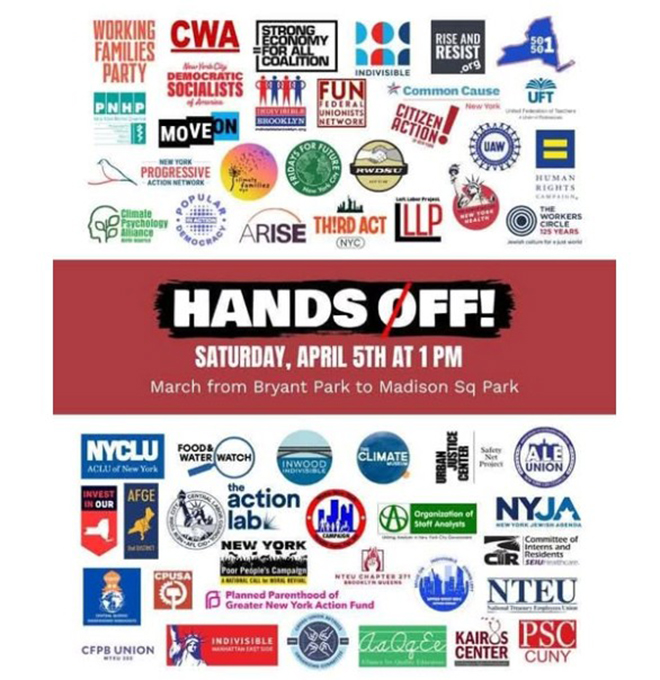
There were a number of union contingents that joined as we marched down Fifth – huge ones from the UFT (United Federation of Teachers) and NYSNA (NY State Nurses Association), the Laborers, CWA, SAG-AFTRA, Musicians. The Central Labor Council endorsed the march. Attached is a poster for the event, put out by the New York Hands Off Committee.
Bottom line people were there, some were able to assemble with their unions, with community groups, but people came out.
Since there were no permits, there were also no speakers.
Anyone could bring whatever signs they wanted.
Here is what one of my neighbors posted on Facebook, which is a damn good summary of the mood of the country:
“This felt to me much more deeply serious and intentional than the typical protest I’ve been to over the years. All two hours were pretty much consumed by gathering and marching–not the usual long-winded, repetitive speechifying (that so often feels like work to listen to) from leaders, would-be leaders, and politicians, that so often consume most of the time, but rather homemade signs, spontaneous chants, our steps, steps, steps, and more steps–and a sense of community with our fellow protestors all across the country.
This was not a one-time thing to make us feel good. This was a promise to keep it up, to do everything we can to save our country.”
Kurt Stand – “#42 was not a DEI hire”, April 5 at the Lincoln Memorial
We knew it would be a good crowd when we got to the Metro – long lines of people buying fare cards – which translated into people coming from outer suburbs to go downtown and attend the rally in D.C.
Between looking at handmade signs, watching people look at their phones to figure out which stop they should get off, it was clear that for many, if not most, going to protests is not something they ordinarily do.
Once we arrived at the Lincoln Memorial, we saw lines of animated people of all ages assembling talking, listening, looking all around (we hooked up with a group from DSA – young, militant, engaged – and happily too seeing old comrades and friends as in days of old). At the Memorial we would go from an open space to a crowded space, with the open space behind us filling up. With people behind us, to the side of us, all around us, it was impossible to estimate the crowd size. Numbers were perhaps not as high compared to some major demonstrations, but that was because this was not a national march; rather it drew from the “DMV” — Washington DC, suburban Maryland, Northern Virginia.
Thus the issues that resonated most were those that are impacting our communities. Federal workers, contractors, grantees were omnipresent as was evident by the signs – including many by scientists. Trans rights, public education, the needs of special needs kids was also a theme for they are the ones being hurt the most by the attempted destruction of the Department of Education. And anger at the attack on democracy has a particular meaning in D.C. as city residents lack (even in good times) basic rights that people in the 50 states take for granted. Speaking of democracy or the lack thereof, another focus was on migrant rights; the illegal deportation to El Salvador of Kilmar Armando Abrego Garcia, a sheet metal worker apprentice and unionist, is a case in point – we had attended a solidarity action at the federal courthouse in Greenbelt the day before. And after the rally on Saturday there was a march to ICE Headquarters that was met by many attending the adjacent Palestinian solidarity demonstration.
Best moment: a guy in a kilt and a bagpipe playing “Foggy Dew” – which fit nicely with the best poster we saw bit later: The answer to Germany 1933 is France 1789.
…
Tomorrow more reports from a few of the 1300 Hands Off! demonstrations around the country
Hands Off! Post 1
By The Editors
April 5 rallies against Trump/Musk nationwide!!
Jack Metzgar – Oak Park, Illinois
While there was a massive protest in Chicago’s Loop, there were impressive smaller ones in more than a dozen suburbs and small Illinois towns. The one in our leafy inner-ring suburb drew more than a thousand. I could not go for health reasons, but my 80-year-old wife reports a varied crowd from kids to seniors filling a public park in our downtown, angry but in high spirits.
Mike Johnston – Watsonville, CA
In Watsonville CA over a thousand people showed up at a rally in the main Plaza for a rally with speakers from the Labor Council, Barrios Unidos, the Day Labor Center and others. It closed with a rousing speech in English and Spanish from Dr. Faris Sabbah, the elected County Superintendent of Education, about growing up under an authoritarian regime in Iraq, reminding those present that all of what we have here was won through a revolution followed by years of struggle, not gifted, and emphasizing the need to unite behind all of the communities that are being attacked to fight back.
Josefa Simkin – Augusta, Maine
About 3,000 people showed up in Augusta, Maine, which has a population of 20,000. They heard from a Palestinian whose family came to the US in 1948 and who is now a US citizen who spoke and quoted history of the Resistance on the island of Mayorca, Spain when Italy’s fascist dictator tried to take over in the 1930’s. He said their motto was: ‘No Pasarán!’. And they won.
Alongside him was a representative from Jewish Voices for Peace, who emphasized that opposing Israel’s war on Palestinians was not anti-semitism. There were also state representatives, people representing trans rights, people representing the perspective of youth, people that were representing the Latino workforce and community that do a lot of labor for the main industries of blueberry picking, lobster industry. It was a chilly 37 degrees which did not dampen the enthusiasm of the crowd.
Ted Cocheau – Santa Cruz, California
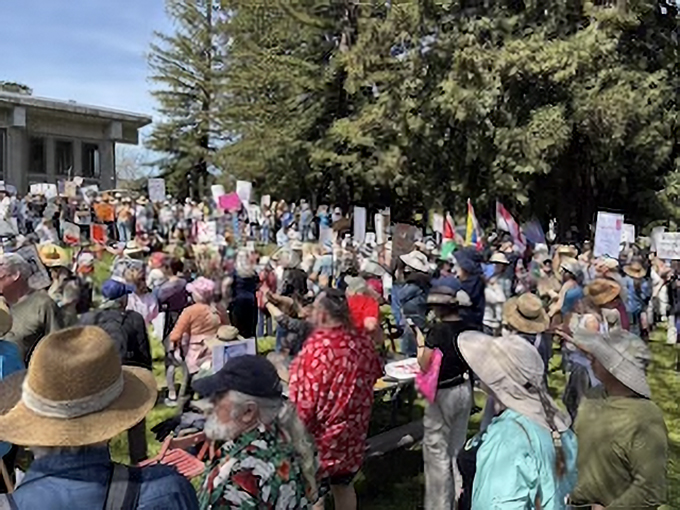
It was a beautiful warm spring day when as many as 5,000 people, most holding creatively derogatory hand-made signs, gathered in front of the Santa Cruz County courthouse at noon. Those who couldn’t fit on the crowded lawn lined up along Water and Ocean streets waving their signs and cheering at the cacophony of horns from passing cars. The crowd was energetic in a happy-mad sort of mood. Happy to be there with a very large crowd of like-minded citizens expressing their outrage, angry about Trump, and his destructive and heartless policies, while also getting after Elon Musk in equal measure. A series of speakers talked loudly into the PA system to be heard over the noisy crowd and the drum banging of none other than Crazy George. The MC got the crowd involved having the crowd loudly yell “Hands OFF! after each of his prompts, including, “What do we want Trump to do with our Social Security? Our Medicare? Our universities? Our libraries? Our scientific research, Our foreign aid? Our allies?…” Most of the crowd stayed for a few hours, happy to be amongst their friends and neighbors with a renewed sense of a moral community, then started drifting off to the parking lots still waving their signs as passing cars honked loudly and feeling happy they had an opportunity to express themselves. One perplexing observation was how few young people participated, especially being in such close proximity to the university, and this same observation was relayed from a friend attending her local rally in Santa Rosa.
Erica Terence – Orleans, California
About 25 Orleans residents assembled in tiny, rural Orleans, California, joining “Hands Off!” protests organized across America and the globe today. Protestors walked across the Orleans bridge to acoustic guitar folk songs, joined by a local dog and cow when they got to the other side!
Peter Olney – San Francisco, California
Civic Center Plaza in San Francisco was filled to overflowing today with demonstrators participating in the “Hands Off!” rally against Trump and Musk. “Hands Off!” is a national coalition resistance effort ofIndivisible, Move OnandThird Act among other forces. The most exciting aspect of this gathering was the creativity and multiplicity of signs and visual artifacts created by individual protestors. My friend Salvo Leonardi from Italy commented that you would not see such variety and creativity in signage in Italy. There would instead be large contingents with organizational – often union – banners and signs. I said that reflected somewhat the weakness of our resistance as we would benefit from tighter and more disciplined participation. I did not see a large and visible contingent for instance from labor although there were many unionists in the crowd. Nevertheless this was a big step!
The “Hands Off!” coalition advertised 11 separate rallies throughout California and many in other states. And “Hands Off!” is only one of many organizations powering the fight back. Keep our marching shoes on as these are only the opening salvos…!!
…
More from “Hands Off” demos around the country Tuesday, Wednesday, Thursday

